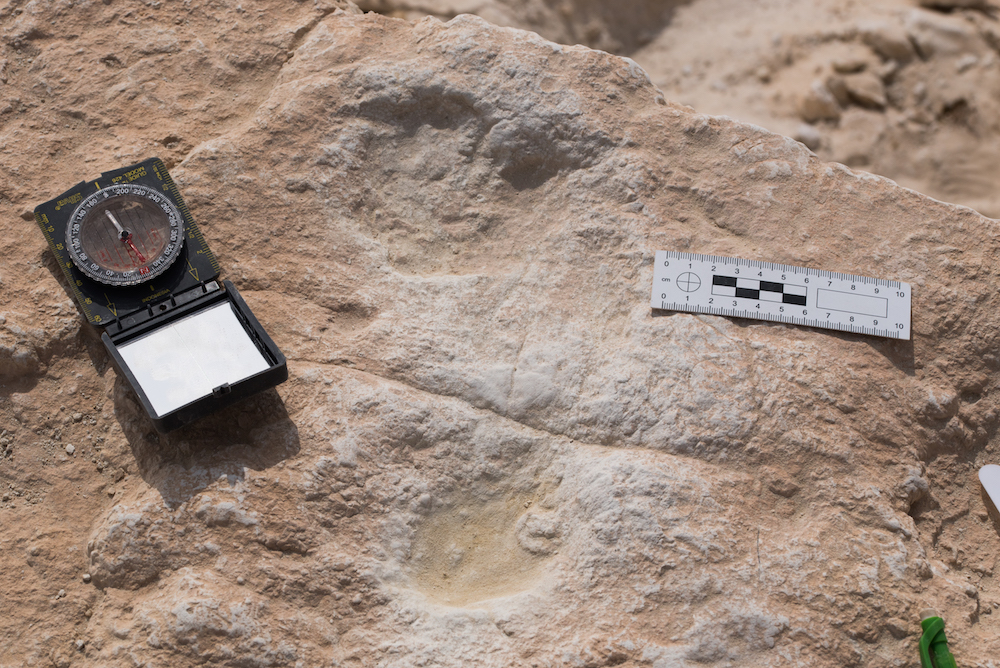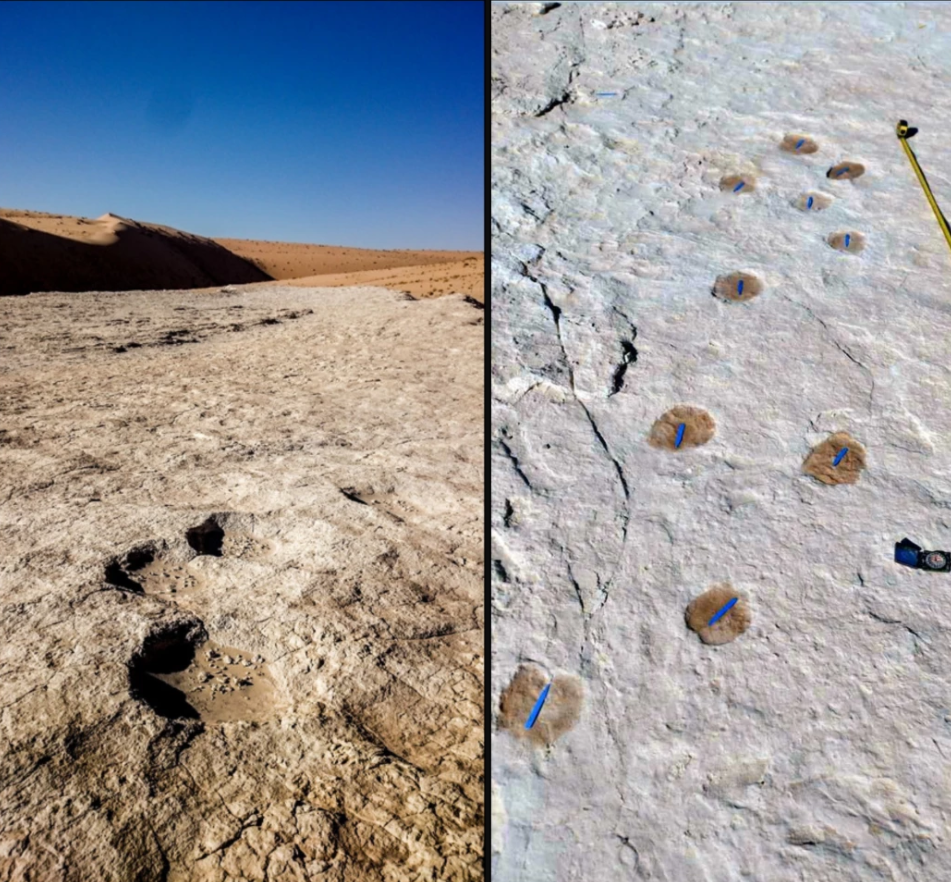
As early humans began their long and arduous migrations out of their cradle in Africa, they inevitably had to pass through the Levant. This region at the eastern end of the Mediterranean is at the crossroads between Africa, Asia, and Europe. Some of these pioneering hunter-gatherer groups went north, others headed west, and others still wandered east, through the Arabian Peninsula. Evidence of the latter migratory path has been recently documented in a new study that described 120,000-year-old footprints, which mark the oldest evidence of a human presence in Arabia.
The oldest evidence of humans in Arabia
The seven ancient footprints were etched by two or three people who walked along the shore of a shallow lake in northern Saudi Arabia. During the Pleistocene, the Arabian Peninsula was almost unrecognizable. Instead of deserts and arid landscapes, Arabia was actually much wetter than it is today. Ancient hunter-gatherers would have trekked through grasslands and woods that were crossed by rivers and lakes, such as the one in the western Nefud Desert where the ancient footprints were studied by paleontologists at the Max Planck Institute for Chemical Ecology in Germany and Griffith University in Australia.
Intriguingly, besides human footprints, the researchers also identified 369 footprints etched by an assortment of other different creatures.
“Of those, elephants and camels were the most abundant, yet there was also buffalo and horses in the area at that time,” says Julien Louys, co-author of the study and a researcher at Griffith University’s Australian Research Centre for Human Evolution (ARCHE). “It was only the presence of freshwater lakes in the region that made the area so habitable for such a diverse community of elephants, camels, oryx, horses, buffaloes and humans.”
Both humans and local beasts likely came to the lake to drink and forage before moving on. Luckily for science, some of the tracks left in the mud have been fossilized.

Using optically stimulated luminescence, researchers at Max Planck were able to date the layers of sediments just above and below the footprints. Rather than measuring the concentration of isotopes of carbon, this novel dating method involves shining light on sediment samples. The photons excite atoms in quartz grains trapped in the sediment, releasing electrons and photons in the process. By measuring the photons, the researchers were able to tell how long ago a sediment was exposed to light — that’s sometime between 122,000 and 121,000 year ago.
Although human presence in the area was sparse around that time, this timeline helps to patch up some holes in the current established narrative of the earliest human migrations out of Africa.
“In human migration out of Africa there is evidence of early humans older than 100,000 years in the Near East (Israel) and in Asia, but until now we have had no evidence of what happened in Arabia; the area in between,” says Mathieu Duval, an author of the study. “So this discovery in the region dated to within the last interglacial period fills a significant knowledge gap in our understanding of the origin and dispersal of our species.”
The findings were reported in the journal Science Advances.


